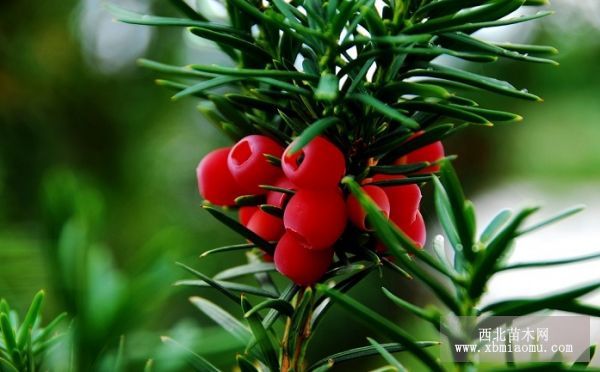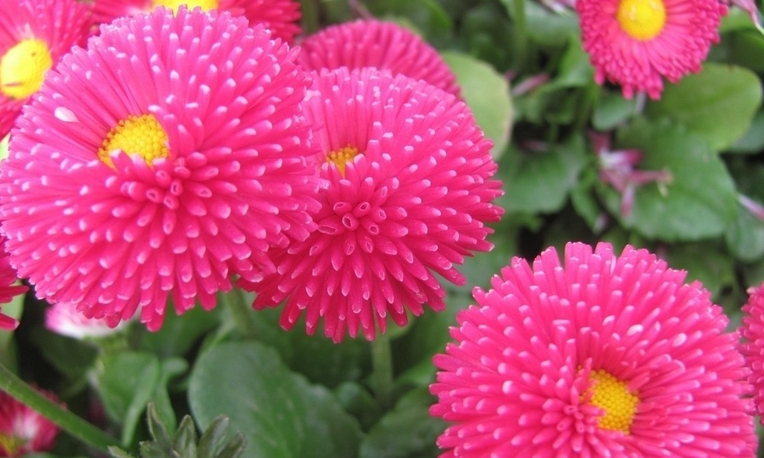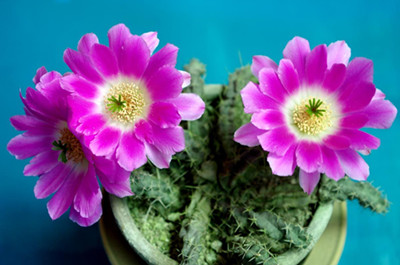What is the knowledge of yew maintenance?
1. "newly purchased bonsai maintenance" the newly purchased yew bonsai had better be sprayed with 1000 times potassium hydrogen phosphate solution on the leaves every three or four days, either before + o'clock in the morning or around four o'clock in the afternoon. after spraying three or four times in a row, it will be gradually reduced to about one time in a month.
two。 "Light requirements" Taxus is a shade-loving plant, suitable for indoor display, but should pay attention to appropriate shading in summer, should not be placed in the room with western light.
3. "soil selection" the soil quality of yew planting should be loose, rich in humus, fertile, slightly acidic soil (between ph=5~6.5).
4. "moisture requirements" basin soil surface slightly yellow and white, leaves slightly curly, basin soil does not need watering, as long as the leaf surface can be sprayed. When the soil in the basin turns white, the basin soil should be watered. Pay attention to watering thoroughly once and for all, so that the basin soil can fully absorb enough water.
5. Nitrogen, phosphorus and potassium fertilizer can promote the growth of branches and leaves of flowers and plants, phosphorus fertilizer can promote the formation of flowers and fruits, and potassium fertilizer can promote the growth of stems and roots. As the newly purchased yew bonsai has used prepared nutritious soil, there is no need to apply fertilizer within 3 months, and then it can be fertilized once every 2 to 3 months. Cake fertilizer is the best fertilizer, and attention should be paid to operating along the edge of the basin when fertilizing. avoid touching the bonsai root. "flowerpot selection" flowerpots should be appropriately larger, and several more holes should be punched at the bottom of the flowerpot, mainly to enhance the water permeability and air permeability of the flowerpot.
6. "Transplant and change basin requirements" half a year after the purchase of bonsai, the saplings gradually grow and the roots are well developed. in order to ensure its normal growth, users are advised to transplant and change the pot. when changing the basin, it is best to break the old basin, do not damage the original soil ball, and slowly move it into the new pot. and watering to determine the root to ensure survival.

2. "Lighting requirements" Taxus is a shade-loving plant, which is suitable for indoor display, but we should pay attention to proper shading in summer and should not be placed in a room with light. 3. "soil selection" the soil quality of Taxus mairei should be loose, rich in humus, fertile and slightly acidic (between PH=5~6.5). 4. "moisture requirement" the surface of the basin soil appears slightly yellow and white, the leaves are slightly curled, and the basin soil does not need to be watered, as long as the leaf surface is sprayed. When the soil in the basin turns white, the basin soil should be watered. Pay attention to watering thoroughly at one time, so that the basin soil can fully absorb enough water. 5. "soil fertility" three elements of plant growth: nitrogen, phosphorus and potassium fertilizer, nitrogen fertilizer can promote the growth of flowers and plants. 6. "bonsai trimming" such as the shedding of the dry yellow leaves in the lower part of the bonsai is serious, which may be due to the growth of the lower branches that are too dense and need to be pruned off a few branches. In order to reduce the excessive consumption of nutrients by branches and leaves and restore the growth of roots. Apply healing anti-corrosion film at the trimming mouth to promote wound healing. 7. "Disease and pest control" in high temperature and dry season, leaf blight and red blight will occur in individual young trees of Taxus mairei, which can be sprayed with a variety of targeted drugs and added new high-fat film to enhance the control effect. Culture and maintenance methods of Taxus, breeding methods of Taxus
Taxus culture and conservation methods, yew breeding methods, yew bonsai maintenance knowledge. Taxus mairei is called yew, and Jincheng producing area is called frozen green, which is an endangered rare plant under national protection. Its branches, leaves and trunk cortex are all raw materials for extracting paclitaxel, a new anticancer drug. In addition to medicinal and material use, it also has high ornamental value. In order to preserve this precious tree species and develop this valuable resource, the techniques of propagation and cultivation in recent years are introduced.
L choose a suitable nursery site
Choose fertile, loose, neutral or slightly acidic soil with good drainage, preferably in woodland or semi-shaded fertile land. Apply enough base fertilizer, rake flat, and prepare the bed for planting.
2 seed propagation
2.l seed treatment
The seeds mature in lO month and are harvested in time and placed in the mixture of water and fine sand (water / sediment ratio 2 ∶ / l). Rub the seeds on the washboard, remove the seed coat, and wear the hard meat seed coat. Select the dry land without stagnant water, dig the pit, and store it in the pit mixed with wet river sand according to the ratio of l ∶ 2. In March of the following year, the clean seeds were taken out and soaked in 50 degrees liquor and 40 degrees Celsius warm water (l ∶ l) for 20 minutes. After being removed, the seeds were soaked in 2O~24h with a concentration of 0.05% 9% ○, in order to break dormancy and increase the emergence rate. Move into the greenhouse at the end of March to promote germination, the temperature requires 2O~25 degrees Celsius, when there are seeds "white" can be sown on demand.
2.2 sowing and transplanting
The border will be made into lm with suitable width and length. Sow the seeds in the border and cover the soil 2.5 cm, pour water through and cover the film. The germinated seeds can also be sown on demand in the border covered with plastic film, with row spacing of 20 cm and plant spacing of lO cm. -2O~3Od can emerge. When the seedlings have 3 or 4 leaves, the seedlings in cloudy days should be transplanted with row spacing of 20 cm and plant spacing of lO cm. Watering, ploughing, weeding and promoting growth after planting. Due to the slow growth of yew, the most afraid of strong light, proper shading is conducive to growth. The seedlings of the same year can reach lO~l5 cm, the highest can reach 20 cm, the seedlings of 2 years old can reach 5O~9O cm, and the seedlings of 4 years old are 1.5 cm tall.
3Cuttage propagation
From May to June every year, the semi-textured branches of the current year are cut as cuttings, and the mother tree is less than lO years old. Length 15cm, cut off the lower branchlets, cut the needles into horseshoe shape, soak in abt7 rooting powder, the concentration is 30 × lO-6 ~ 50 × 10-6, soaking time 3~l2h. The cuttings were then inserted into a seedbed with a substrate of river sand. The seedbed requires lm width, suitable length and cutting depth of 3cm to 5cm. The row is 8 centimeters away from lO and water is sprayed immediately. Set up a frame on the seedbed and cover it with plastic sheet. spray water 2 or 3 times a day and 1 time a day after half a month. -keep the ground temperature at 2O~3O degrees Celsius, without strong light, 3O~4Od can take root. During this period, foliar fertilizers such as brassin can be sprayed to promote growth.
- Prev

Culture methods and matters needing attention of Qianrihong
Cultivation requirements Qianrihong is not strict on the environment, but the sex likes the sun, hot and dry climate, strong, resistant to pruning, pruning after flowering can sprout new branches and continue to bloom. Like loose and fertile soil, not cold-resistant, heat-resistant, afraid of stagnant water, the suitable temperature for growth is 20 ~ 25 degrees Celsius
- Next

The Culture method of Meihua Horn
For the cactus family deer antler column plant, spring and summer flowers bloom pink or rose, cross-pollination, beautiful flower horn this variety is relatively resistant to exposure, dry and transparent water supply during the growth period, adult plants as little as possible, otherwise it is easy to grow very long. Meihuajiao is relatively simple to mix soil, perlite mixed with peat
Related
- Fuxing push coffee new agricultural production and marketing class: lack of small-scale processing plants
- Jujube rice field leisure farm deep ploughing Yilan for five years to create a space for organic food and play
- Nongyu Farm-A trial of organic papaya for brave women with advanced technology
- Four points for attention in the prevention and control of diseases and insect pests of edible fungi
- How to add nutrient solution to Edible Fungi
- Is there any good way to control edible fungus mites?
- Open Inoculation Technology of Edible Fungi
- Is there any clever way to use fertilizer for edible fungus in winter?
- What agents are used to kill the pathogens of edible fungi in the mushroom shed?
- Rapid drying of Edible Fungi

